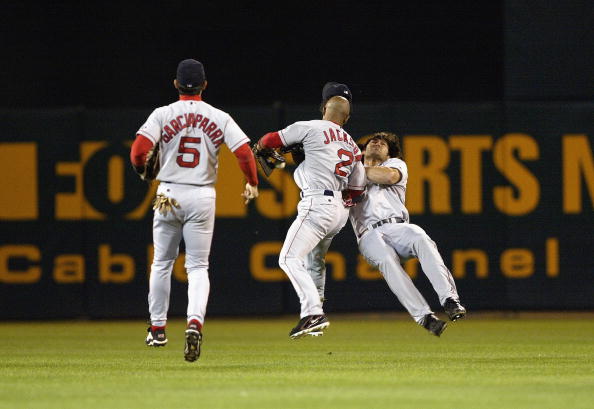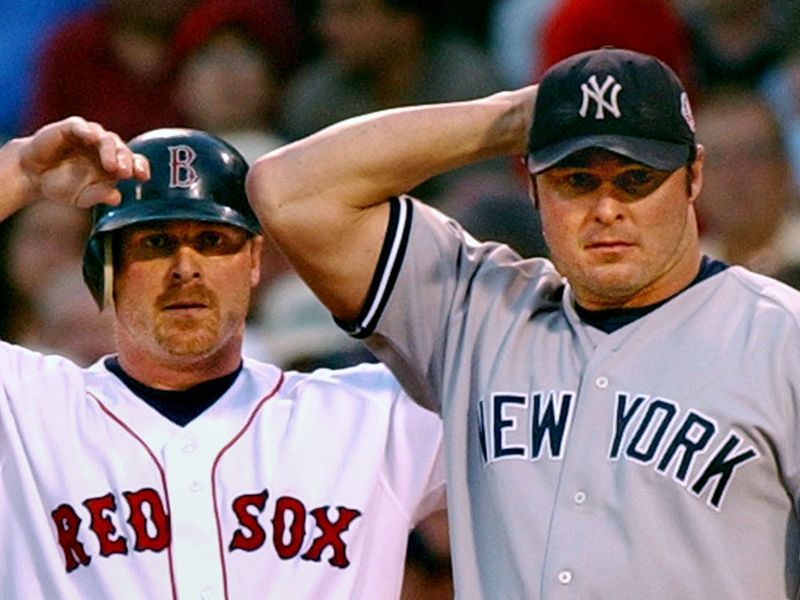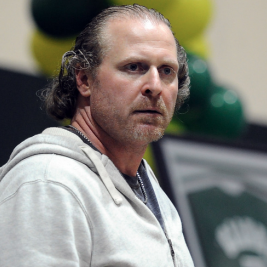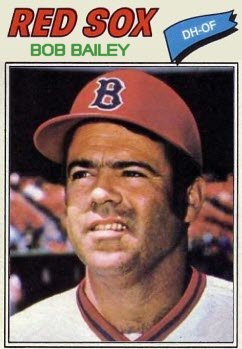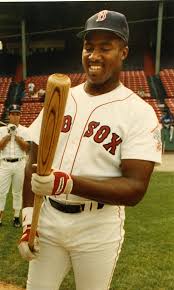While nearly 15 years has separated these two teams, there are a lot of similarities between them. With what appears to be two different ages of baseball, what can we take away from the ages?
The opening day lineups.
In 2003, The opening day lineup looked like this. 1. Johnny Damon CF, 2. Todd Walker 2B, 3. Nomar Garciaparra SS, 4. Manny Ramirez LF, 5. Kevin Millar 1B, 6. Shea Hillenbrand 3B, 7. Jeremy Giambi DH, 8. Trot Nixon RF, 9. Jason Varitek C Starting Pitcher Pedro Martinez.
This lineup had it all. They had key veteran players to build around. They had speed, raw power, and most of all talent. This team was poised to make a deep October run until the rival Yankees ended it on a sour note. The 2004 team would eventually reverse the 86 year long drought. After that “The Curse of The Great Bambino” was over.
This season, the Opening Day lineup consisted of 1. Mookie Betts RF, 2. Andrew Benintendi LF, 3. Hanley Ramirez 1B ( not on the team anymore.) 4. J.D Martinez DH, 5. Xander Bogaerts SS, 6. Rafael Devers 3B, 7. Eduardo Nunez 2B, 8. Jackie Bradley Jr. CF, 9. Christian Vazquez C. Starting Pitcher Chris Sale.
The Similarities.
This team also has raw power and speed. Their ace Chris Sale is most comparable to Pedro Martinez in his intensity and competitiveness. Both teams had a multitude of different ways to scare opponents offensively.
By the numbers: Both teams led the league in runs batted in, hits, OPS, total bases, and extra base hits. Both teams were leading their division up to this point in the season (2018 season isn’t 100% over yet). These teams were offensive power houses that American League teams were scared to pitch against.
Both teams provided some serious defense as well. It wasn’t always about amazing run support. The pair of teams had a stud patrolling in right field (2018 Betts, 2003 Nixon). Both teams had a perennial shortstop (Bogaerts, Garciaparra). Both teams had a highly regarded designated hitter (Martinez, Giambi). Finally, both teams made a very questionable move during the season (2018 cutting Hanley, 2003 signing David Ortiz).
In both cases they had their first seasons with an incredible duo. After the signing of David Ortiz to pair with Ramirez the tandem would go on to ravage pitchers for years. Most would regard the two as the best 3 and 4 hitter combo of all time. In 2018, the J.D and Mookie combo offers hope of a new duo equal to that of the deadly 2003 pair. Offering up a different approach to the game, this duo can hit, work the count, and launch home runs with the best of them.
Some differences that should be highlighted.
One of the biggest differences were the managers. Grady little led the team in 2003. After a controversial ending to their season he was heavily blamed for not cruising by the Yankees. This led to his timely firing by Theo Epstein and company. Which led to the hiring of legendary manager Terry Francona.
In 2018 the Red Sox are led by Alex Cora, the former bench coach of the defending World Series Champion Houston Astros. He is way ahead of his time. In implementing his system, his bench coaches and assistants utilize new forms of measurements in the game. Using new revelations such as: launch angle, statcast, war, and other forms of saber metrics. He is one of the main reasons why this 2018 team is on the verge of making history.
Comparing managers and General managers.
As for the general managers, they too take separate approaches. Theo was a free agent build type of guy, along with an incredible farm system. That’s how he also made the Chicago Cubs a world series champion. He is also one of the youngest general managers to win a World Series, as well.
On the other hand, Dave Dombrowski also has a winning approach. Dombrowski arrived after the departure of former GM Ben Cherington. He built the franchise into a winning culture in a matter of two seasons. While most people note the demolition of the farm system, it is slowly building itself back up with great draft additions such as Tristan Casas. Dave has also won a title with the then Florida Marlins, who now are called the Miami Marlins.
Even the fact that it seems like a different era of baseball is very prevalent. Pitchers are throwing harder, while also not staying in the game as long as they used to. Guys like Nolan Ryan and Greg Maddox were pitching a lot more innings a season.
The MLB commissioner office seems like it is always trying to speed up the game, while not being as concerned with more pressing matters such as PEDs and off the field incidents. As long as the commissioner can stay focused on the most important matters the sport can continue to grow and be more fun for generations to come.
Conclusion.
While both teams are strikingly similar, the differences stand out well. The 2018 team is more aggressive on the base paths, and are much faster. That comes with the evolution of the game. This team is also a lot younger than Red Sox teams of years past. This 2018 team looks very hungry, but hopefully the outcome will differ from the fate of the 2003 team.
While the 2018 season is still heating up, how it will be written among the other Red Sox teams will soon come into fruition. Keep it here for the best coverage of all your favorite Boston teams and players. Only at Bostonsportsextra.com
